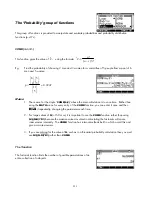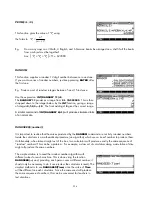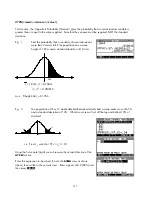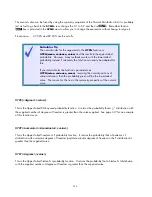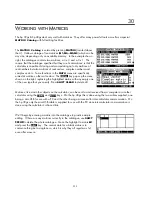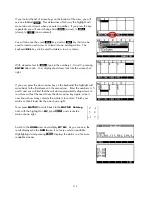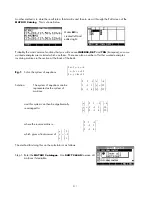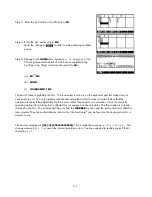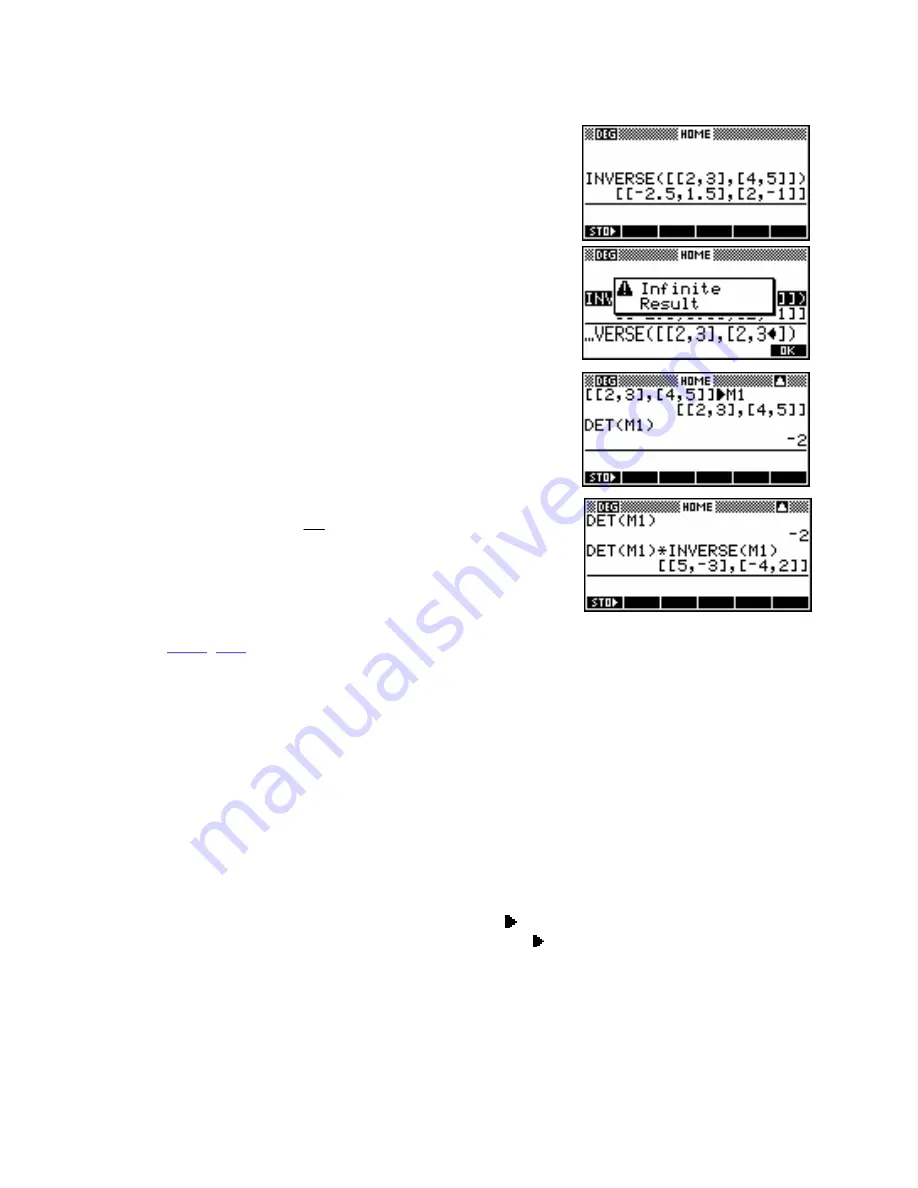
INVERSE(<matrix>)
This function produces the inverse matrix of an n x n square matrix,
where possible. A fully worked example of the use of an inverse matrix
to solve a 3 by 3 system of equations is given in the chapter on Using
Matrices on page 211 and in Appendix A on page 302.
An error message is given (see right) when the matrix is singular (det.
zero).
Note:
Some people write the inverse matrix as a fraction (one over the
determinant) multiplied by a matrix, so as to avoid decimals and
fractions within the inverse matrix. The calculator does not do
this. If you want the matrix with the determinant factored out,
then evaluate
DET(matrix)
first, record the fraction and then
evaluate
DET(matrix) * INVERSE(matrix)
to obtain (usually)
a non-fractional matrix.
i.e.
A
=
⎢
⎡
2
3
⎤
1
=
1
⎡
5
−
3
⎥
⎤
⎣
4
5
⎦
⎥
⇒
A
−
−
2
⎣
⎢−
4
2
⎦
Remember that the inverse matrix is not just the matrix, but the fraction
times the matrix.
See also:
RREF
,
DET
LQ(<matrix>)
This function takes an
mxn
matrix, factors it and returns a list containing three matrices which are (in order):
•
an mxn lower trapezoidal matrix
•
an nxn orthogonal matrix
•
an mxm permutation matrix.
If you want to separate these matrices for later use then you should store them into a list variable.
For example, if
M1
was [[1,2,3],[4,5,6],[7,8,9]] then
LQ(M1) L1
would store the three resulting matrices
into list variable
L1
. In the
HOME
view you could now enter
L1(1) M2
to store the first of the result matrices
into
M2
and so on.
197























